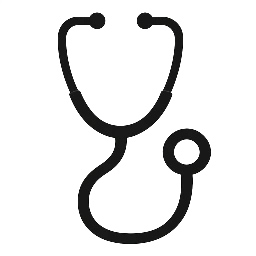NURS 6107 Curriculum Design, Development, and Evaluation assessment 3: Curriculum Evaluation
Curriculum evaluation is a critical process for nursing educators to ensure that their educational programs are effective, up-to-date, and aligned with the evolving needs of the healthcare industry. Here is a step-by-step guide on how nursing educators can conduct curriculum evaluation:
Define the Purpose and Scope:
Clearly outline the purpose of the curriculum evaluation, whether it is for program improvement, accreditation, or other specific goals.
Determine the scope of the evaluation, such as whether it will focus on a specific course, program, or the entire curriculum.
Gather Stakeholder Input:
Involve faculty members, students, alumni, healthcare practitioners, and other relevant stakeholders in the evaluation process.
Collect their input on what is working well and what needs improvement in the curriculum.
Review Curriculum Documents:
Examine the existing curriculum documents, including syllabi, course outlines, and program objectives, to gain a comprehensive understanding of the curriculum structure.
Identify Evaluation Criteria:
Establish clear criteria for evaluating the curriculum. Common criteria include relevance, alignment with industry standards, student learning outcomes, and assessment methods.
Collect Data:
Use various data collection methods, such as surveys, focus groups, interviews, and document analysis, to gather information about the curriculum’s strengths and weaknesses.
Assess Learning Outcomes:
Evaluate whether the curriculum is achieving its intended learning outcomes.
Use assessment data and student performance metrics to measure the effectiveness of the curriculum.
Compare to Accreditation Standards:
Ensure that the curriculum meets the accreditation standards set by relevant nursing education accrediting bodies (e.g., CCNE, ACEN).
Identify any areas where the curriculum falls short of these standards.
Analyze Findings:
Analyze the collected data to identify trends, patterns, and areas for improvement.
Consider both quantitative and qualitative data to gain a comprehensive perspective.
Engage in Benchmarking:
Compare your curriculum to those of peer institutions or nursing programs known for their excellence.
Identify best practices that can be adopted to enhance your curriculum.
Develop Improvement Strategies:
Based on the evaluation findings, create an action plan with specific strategies for curriculum improvement.
Prioritize areas that require immediate attention and allocate resources accordingly.
Implement Changes:
Collaborate with faculty and other stakeholders to implement the proposed changes to the curriculum.
Monitor the progress of implementation and make adjustments as needed.
Assess the Impact:
Continuously assess the impact of curriculum changes on student learning outcomes and program effectiveness.
Collect data to determine whether the improvements are achieving the desired results.
Document and Report:
Maintain detailed records of the curriculum evaluation process, findings, and actions taken.
Share the results and improvements with relevant stakeholders, including accreditation bodies.
Repeat the Process:
Curriculum evaluation should be an ongoing and cyclical process.
Regularly review and update the curriculum to ensure it remains responsive to changing healthcare needs and educational best practices.
Seek Professional Development:
Encourage faculty to engage in professional development opportunities to stay current with best practices in nursing education.

Leave a Reply